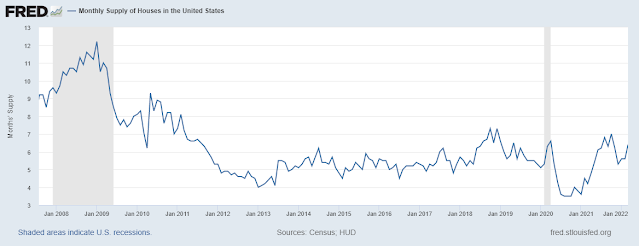The Federal Reserve (US Fed) is done watching inflation run away and has made it a priority to cool down one of its biggest drivers: the housing market. With rising mortgage rates, Americans will not have the easy money to purchase real estate which is expected to cool down the real estate in the US.
In December, the average 30-year fixed mortgage rate sat at 3.11%. That rate is up to 5.27%—its highest level since 2009.
During much of the pandemic's housing boom, historically low mortgages shielded homebuyers, to a degree, even as home prices shot up nearly 35% over the past two years.
An analysis provided by Moody’s Analytics finds that 96% of regional housing markets are overvalued, and 27% of markets are overvalued by more than 30%.
- The most overpriced markets are Boise (by 75%); Austin (66%); Ogden, Utah (63%); Las Vegas (60%); and Atlanta (60%).
Case in point: The metros of New York City and San Francisco are overpriced by just 3% and 13%, respectively.
Why did the market rates of houses move up?
- Work-from-home made houses more important than ever
- Home prices continued to rise to create a Giffen effect on the population which created a FOMO effect on them, coaxing them to purchase a property
- Demand is concentrated in specific areas, especially the suburbs as the rates in metro cities like NYC and Detroit were already high.
- Inflation forced people to buy real assets like houses
- The migration to suburbs to find peace and better quality of life has become more real than before during the pandemic
- The continuous increase in housing prices has also reduced the supply of houses in the market. Homeowners are unwilling to sell their houses even though the prices have started to cool down from March.
- The price of labour, housing materials and other expenses have also risen sharply in recent times
As per JP Morgan, the nationwide nominal house price index is now 40% above its 2012 low-point and 4% above the peak reached in 2006.
Challenges faced by the industry
- Rising Prices of materials, labour
- Improper suburban settlement plans
- Improper tax distribution across government states
- Prices went on a bidding spree with only the upper class and upper-middle class being able to safely bid for a house in the market
- The skyrocketing prices have led to a fall in demand as people are simply not able to afford the house
- Homeowners are not interested in selling the house at current levels either, Supply is still shorter than demand thereby increasing the prices in the long run.
In summary: Although housing is a very local-driven market and aggregate data does not show the true picture, it definitely looks like the US housing market could be in for a period of consolidation and pause. Implications for businesses that are part of the US housing supply chain could see a definite fall in revenue growth and contraction in margins.



No comments:
Post a Comment